Introduction to the flavor and taste characteristics of Brazilian coffee beans | the output of historical stories in Brazilian coffee producing areas ranks first in the world.
When it comes to coffee production, of course, it is South America and Brazil, which is the largest coffee grower and producer in the world. In recent years, coffee consumption in Brazil has also gradually increased, becoming the second largest consumer in the world after the United States. There is a wide variety of Brazilian coffee, the vast majority of which are unwashed and sun-dried, classified according to the name of the state of origin and the port of transport.
Brazil is the largest coffee producer in the world, providing nearly 45% of the world's coffee raw beans. The length of the country's dry season may even affect coffee prices around the world.
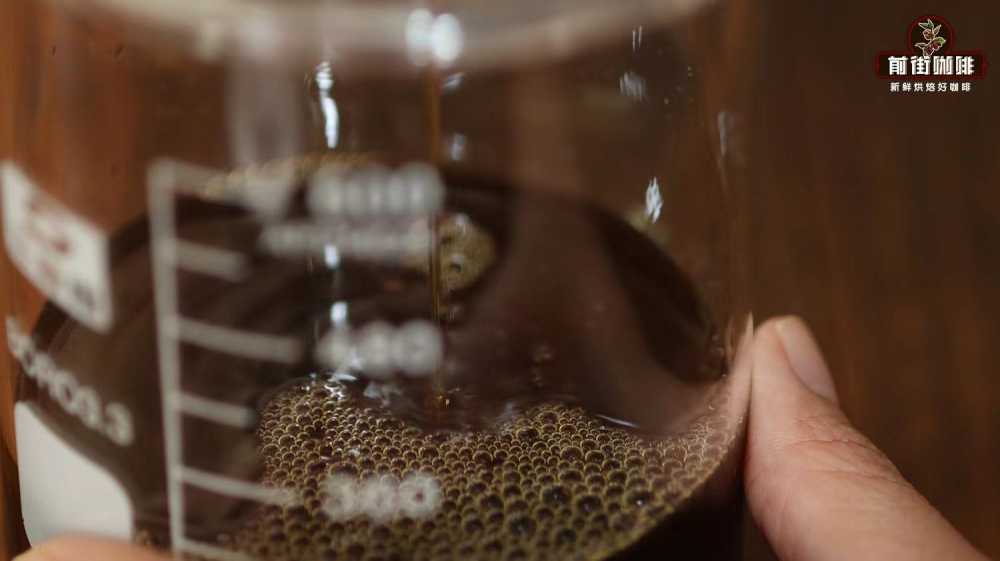
Brazil has 21 states and 17 states produce coffee, and seven of the Brazilian coffee bean producing areas have the largest production, accounting for 98% of the country's total output.
State of Sao Paulo (Mogiana, Centro-Oeste)
State of Parana (Norte Pionerio do Paran á)
Bahia State (Planaltoda Bahia, Cerrado da Bahia, Atlantico Baiano)
Espiritu Santo (Montanhas do Esp í rito Santo, Conilon Capixaba)
Minas Gerais State (Sul de Minas, Cerrado Mineiro, Chapada de Minas, Matas de Minas)
Londonia (Rond?nia)
Rio de Janeiro State (Rio de Janeiro)
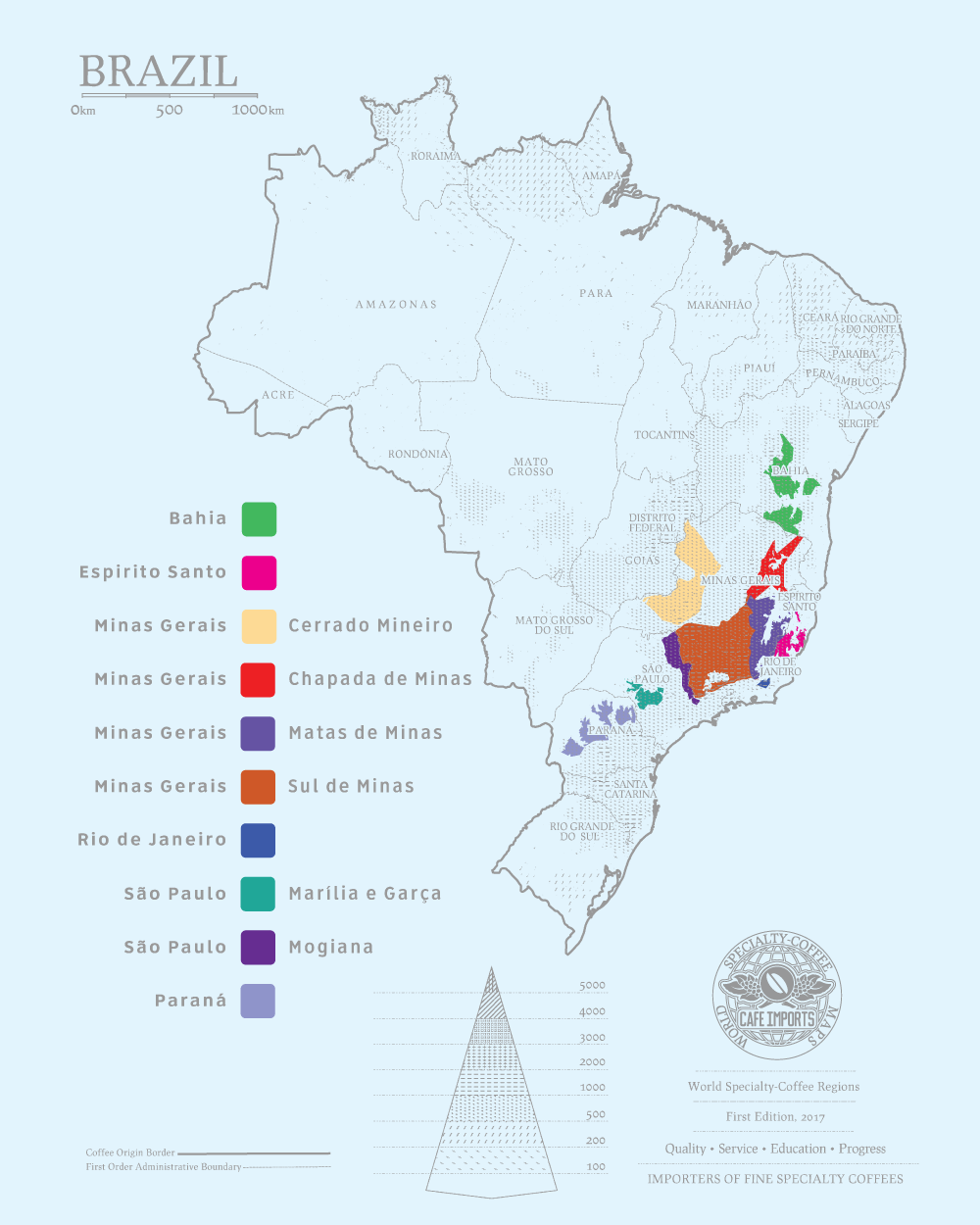
Legendary episode
Brazil's coffee industry is legendary. Three hundred years ago, there were no coffee trees in Brazil, but an inextricable love created the status of Brazilian coffee. In 1727, a talented army officer, Pacita, was ordered to go to French Gaiana to mediate the territorial dispute between France and the Netherlands. The governor's wife actually fell in love with Pacita and gave him a bag of bourbon seeds (it is also said that he was given coffee saplings). When Pacita returned to Brazil, he quit his official job and went to the northwestern province of Para, near the equator, to grow coffee, which unexpectedly led to an upsurge in the cultivation of Brazilian coffee.
For more than two hundred years, coffee fields have gradually moved to the more populous southeast of S ã o Paulo, Espiritu Santo (Holy Spirit, meaning "Holy Spirit"), and to the southern province of Parana, which is located between 20 and 30 degrees south latitude, at slightly higher latitudes, and frost in winter can cause cold damage and farmers can't afford to lose. From 1970 to 1980, Brazilian coffee farmers tried to develop the warmer provinces of Minas Geris and Bashiya, north of Sao Paulo, at latitudes of 10 to 20 degrees south, with warmer winters free from frost. Now Minas Geres province (hereinafter referred to as Minas province) has become a new hope for Brazilian boutique coffee.
Planting variety
There are many varieties of coffee grown in Brazil, with red bourbon, yellow bourbon, New World and Kaduai as the main varieties. Kaddura, Akaia, Obata, Alamosa, pointed body bourbon and so on have also been planted and studied. Cambinas Agricultural Research Institute in Sao Paulo is a famous coffee variety improvement arsenal in Brazil. Katim, the most widely cultivated in the world, is the masterpiece of Portuguese and Brazilian scientists.
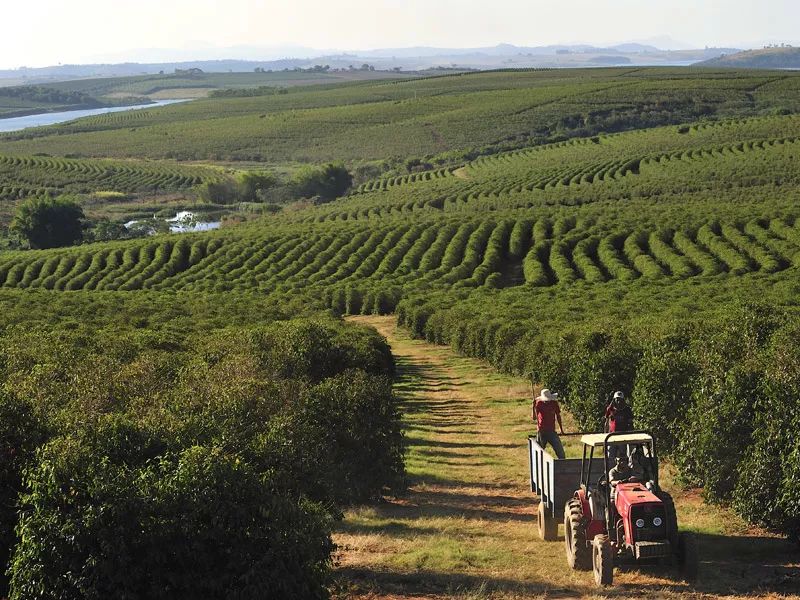
New World (English Mundo novo)
New World (also known as Mondonovo) is a hybrid of Bourbon and Tibica, which first appeared in the 1940s and is still widely welcomed by Latin American coffee producers today. Its disease resistance and yield are better than bourbon and Tibika, but at the cost of insufficient flavor complexity.
Kaduai (English Catuai)
Brazil bred Kaduai in the 1950s, which is a hybrid of Kaddura and the New World, with strong disease resistance and high yield. Like Kaddura, Kaduai's ripe fruit is naturally divided into red and yellow (I personally prefer the former). Kaduai is famous for its acidity and is common in most Central American countries.
Kaddura (English Caturra)
In the 1930s, a Bourbon gene mutation was found near the Brazilian city of Kadura, and it was named Kaddura. Kaddura's yield is high, and compact plants are easy to pick, but if planted at lower elevations, this characteristic becomes its own worst enemy-coffee becomes quite light here, so the weight of the fruit itself can crush the plant. If planted in a high altitude environment (more than 1200 meters), Kaddura's coffee quality and yield can be better guaranteed. Kaddura is a common variety of Central American coffee belts.
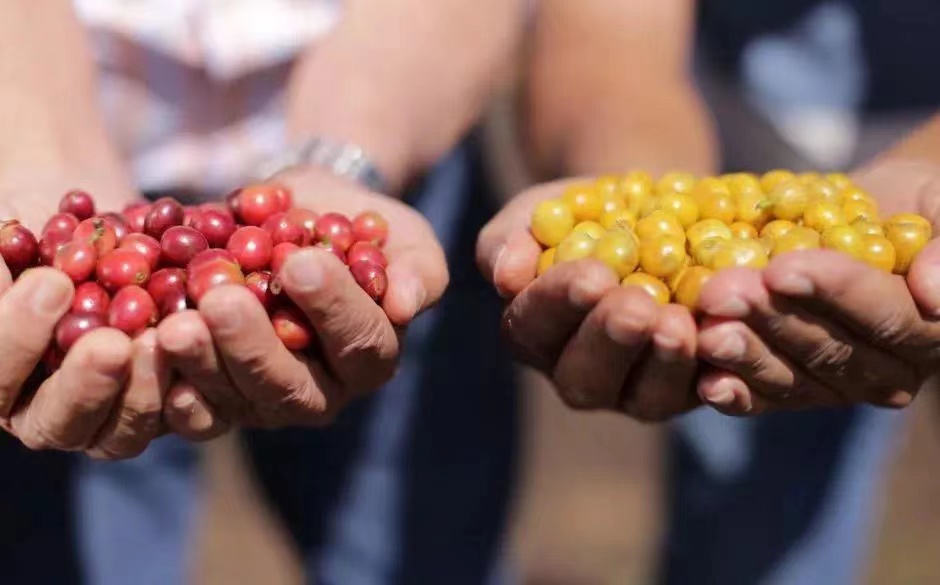
Bourbon
Speaking of bourbon varieties, we have heard a lot about the colors of bourbon, such as red bourbon, yellow bourbon and pink bourbon. Bourbon species, the second species caused by the Typica mutation, belong to the oldest existing coffee variety. The green fruit will appear bright red when ripe, and the bourbon species at high altitude usually have better aroma and bright acidity. Red bourbon or the most common type, because in general, coffee fruit will slowly ripen in unripe green, to light yellow, then to orange, and then red at the best time of picking, and finally to overripe dark purple.
Red bourbon is so because the fruit is red. The same is true of yellow bourbon and pink bourbon. Yellow bourbon is generally considered to be a cross between red bourbon and other varieties. Yellow bourbon will show yellow fruit when it is ripe. It was first found in Brazil. At present, Brazil is also the main producer of yellow bourbon. In addition to the yellow fruit, the yield is also relatively low and is not resistant to wind and rain, so it is not widely planted. Pink bourbon is even rarer. Pink bourbon is derived from red bourbon and yellow bourbon, but it is rare because the pink shape of the fruit is determined by recessive genes, so it is very easy to interfere with it, so it is difficult to maintain the appearance of pink fruit.
There are mainly two kinds of topography in Brazil, one is the Brazilian plateau above 500 meters above sea level, and the other is the Brazilian plain below 200 meters above sea level. The main cultivated and well-known variety is bourbon (including yellow bourbon, red bourbon, Pingdou Shan du Shi). The taste of Brazilian coffee is mainly characterized by low acidity, nutty flavor, balanced and moderate thickness. In the world of boutique coffee, Brazilian coffee is not outstanding, but Brazilian beans are often used as blended varieties in Italian coffee. Because of the high degree of balance, it is often used by merchants as blue mountain flavor beans.
Characteristics of coffee beans
Brazilian coffee beans refer to all coffee beans grown in Brazil. Except for Sanduo, Brazilian beans are mostly "cheap and good" coffee. Can be used for mass production of integrated coffee beans, mostly for heavy roasting. The two matching beans of Qianjie coffee also choose Brazilian coffee beans, Qianjie basic matching and Qianjie boutique blending. The main raw material of instant coffee is also Brazilian coffee beans.
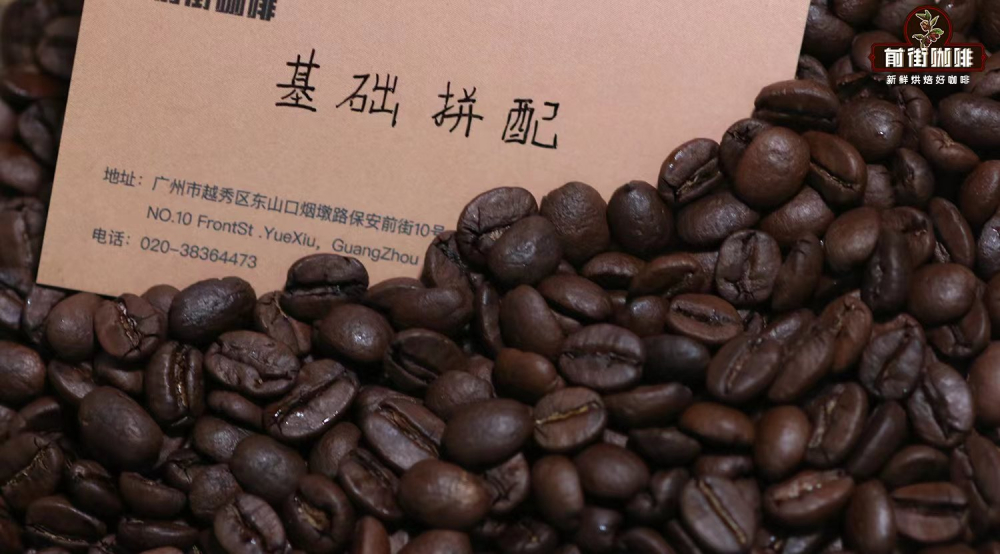
Brazilian coffee beans have a strong aroma, moderate bitterness and high texture acidity. The overall taste is soft, low acidity and endless aftertaste. The taste of Brazilian coffee has a low sour taste, with the sweet and bitter taste of coffee, the entrance is very smooth, but also with a hint of grass aroma, slightly bitter in the fragrance, smooth and smooth, with a pleasant aftertaste. So if there is no good Brazil, there is no good concentration.
Brazilian hand-made coffee in front of the street
There are two kinds of Brazilian coffee beans in the coffee bean list on the front street, namely, the red bourbon in the Syrador producing area and the yellow bourbon in the queen's manor. Now let's brew Brazilian Hillado coffee beans and learn how to brew Brazilian coffee. Syracuse belongs to Minas province, is Brazil's high-quality coffee producing area, this area is the essence of the Sierra Prairie, high altitude, fertile soil, to grow sweet, mellow thickness and high cleanliness of boutique coffee beans. Qianjie has also tasted coffee from all the major producing areas in Brazil. Shirado, as a large producing area, has the most stable and distinctive flavor. This Douqian Street is used for recipes in Italian blended coffee and single food rations that represent the flavor of Brazil.
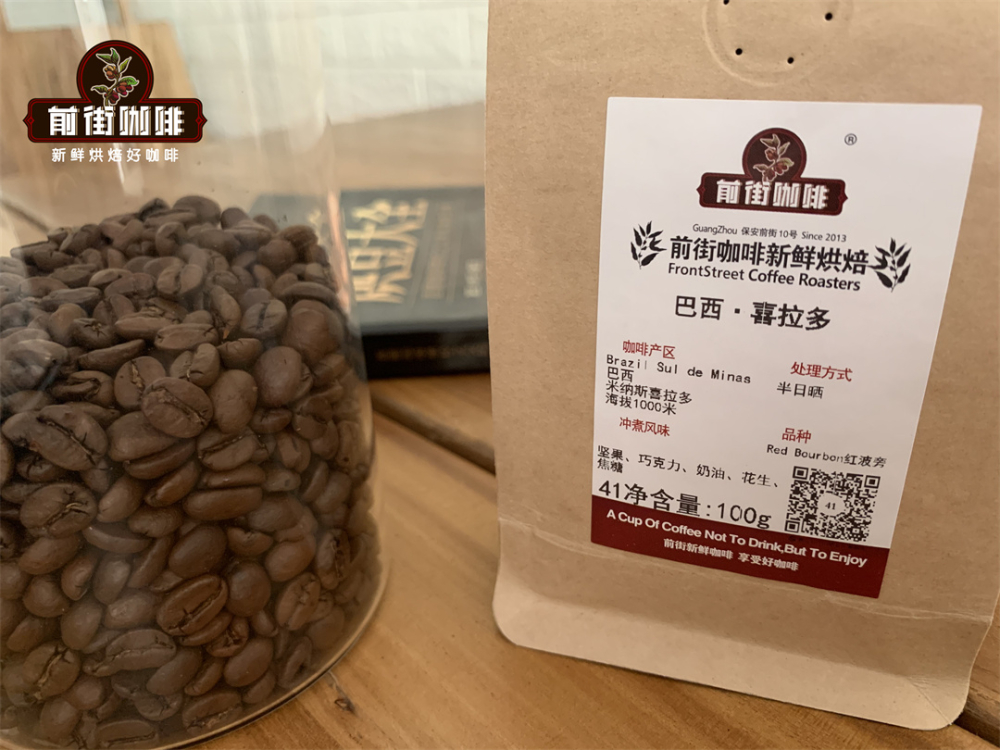
Cooking parameters: use Kono filter cup
Water temperature: 88 ℃
Amount of powder: 15g
Powder-to-water ratio: 1:15
Degree of grinding: medium and fine grinding (Chinese standard No. 20 screen pass rate 70-75%)
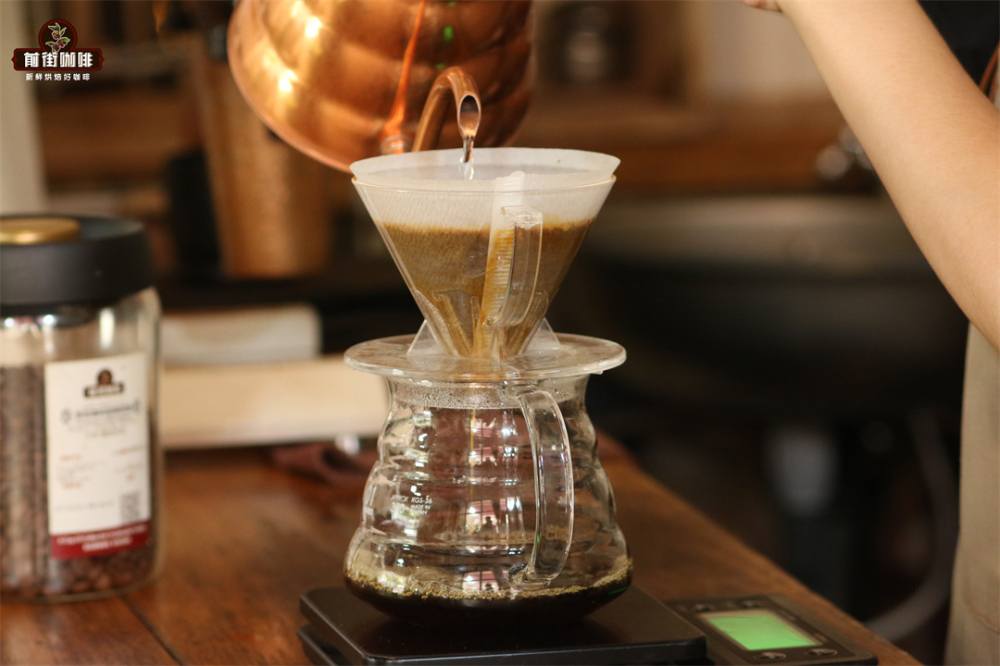
Qianjie coffee is extracted by stages, also known as three-stage brewing: steaming with 30 grams of water for 30 seconds, injecting water around a circle to 125 grams for stages, continuing to inject water to 225 grams when the water level is about to be exposed to the powder bed, removing the filter cup when the water level is about to be exposed to the powder bed, (steaming starting timing) the extraction time is 2 grams 39th 05 "- 2 grams 3915".
Brazilian red bourbon cooking flavor: the entrance has obvious sweetness, with a hint of lemon aroma, with a strong nutty flavor, the latter part of the performance has an obvious dark chocolate flavor, the overall feeling is more round.
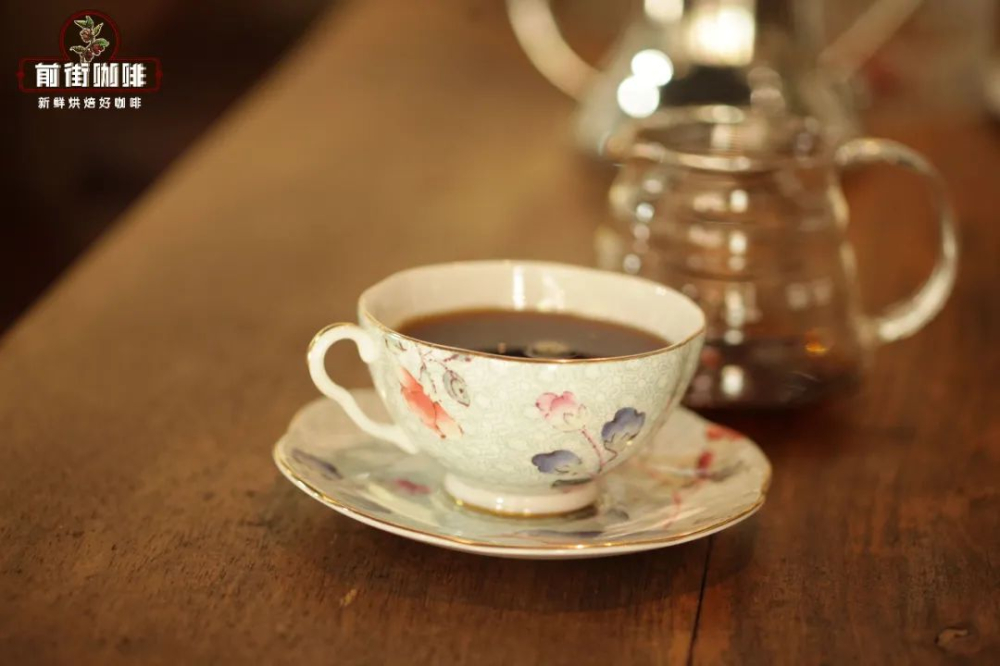
Important Notice :
前街咖啡 FrontStreet Coffee has moved to new addredd:
FrontStreet Coffee Address: 315,Donghua East Road,GuangZhou
Tel:020 38364473
- Prev

Peruvian Coffee Bean Flavor characteristics and Peruvian Coffee Top production areas Peruvian Coffee recommendation
Professional coffee knowledge exchange more coffee bean information please follow the coffee workshop (Wechat official account cafe_style) front street-Peruvian coffee introduction as a rising star in the coffee industry, Peruvian coffee is gradually opening up its popularity and entering the international market. Peruvian coffee has always been used to stabilize the mellow mixed beans of comprehensive coffee.
- Next

How's the Brazilian coffee? Brazilian coffee beans are suitable for people's choice of non-eosinophilia.
Professional coffee knowledge exchange more coffee bean information please follow the coffee workshop (Wechat official account cafe_style) Front Street-Brazilian Coffee introduction in 1727, Francis de Melo Pachta introduced coffee to Brazil from the port of Caybanquet. Today, Brazil has become the largest coffee producer in the world and occupies an important position in the whole boutique coffee industry. In Brazil
Related
- Beginners will see the "Coffee pull flower" guide!
- What is the difference between ice blog purified milk and ordinary milk coffee?
- Why is the Philippines the largest producer of crops in Liberia?
- For coffee extraction, should the fine powder be retained?
- How does extracted espresso fill pressed powder? How much strength does it take to press the powder?
- How to make jasmine cold extract coffee? Is the jasmine + latte good?
- Will this little toy really make the coffee taste better? How does Lily Drip affect coffee extraction?
- Will the action of slapping the filter cup also affect coffee extraction?
- What's the difference between powder-to-water ratio and powder-to-liquid ratio?
- What is the Ethiopian local species? What does it have to do with Heirloom native species?

